Alwars
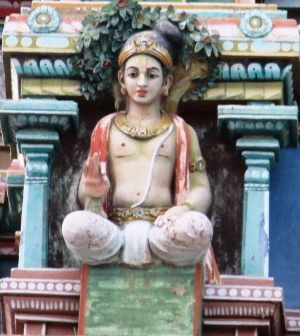
Alwars are 12 Tamil Vaishnavite saint poets.
They started the Vaishnavite Bhakti movement in Tamil Nadu.
Alwars dedicated their entire lives to singing the glory of Lord Vishnu and worshiping him.
What is Bhakti movement?
The Hindu religion until their time was mainly ritualistic.
The spiritual aspirant performed various prescribed religious duties and rituals to attain higher worlds.
In the Bhakti movement, the focus is on love for God.
The devotee surrenders himself completely to the divine wish and will.
He has no materialistic expectations from God.
He only desires perpetual proximity to God.
Religious prescriptions and injunctions play a much lesser role in bhakti.
Shabari tasted every fruit before offering them to Sri Rama.
She wanted to make sure that they tasted good.
The Lord accepted them without considering that they were leftovers (ucchishta).
This is the spirit of bhakti.
The supreme God of the Alwars
Alwars considered Vishnu as the supreme God.
They called him Perumal and Tirumal.
Perumal means Perum + Aal - the great person.
Tirumal is Lakshmi-Narayana, Vishnu and Lakshmi together.
Meaning of Alwar
Alwar of Azhwar (ஆள்வார் or ஆழ்வார்) can be interpreted in two ways:
Someone immersed in God
The ruler or master
Names of the 12 Alwars
- Poygai Alvar
- Putattalvar
- Peyalvar
- Thirumalisai Alvar
- Nammalvar
- Kulasekhara Alvar
- Periyalvar
- Thondaradippodi Alvar
- Panalvar
- Thirumangai Alvar
- Madhurakavi
- Andal
Their dates of birth
Poygai, Putattar, Pey, Thirumalisai - around 4200 BC.
Madhurakavi - 3222 BC.
Nammalvar, Kulashekharalvar, Periyalvar, Andal - between 3101 and 3003 BC.
Tondaradippodi - 2803 BC.
Panan - 2758 BC.
Thirumangai - 2702 BC
Alwars in Srimad Bhagavata
Srimad Bhagavata XI.5.38 - 40 says:
कृतादिषु प्रजा राजन् कलाविच्छन्ति सम्भवम् ।
कलौ खलु भविष्यन्ति नारायणपरायणाः ॥ ३८॥
क्वचित्क्वचिन्महाराज द्रविडेषु च भूरिशः ।
ताम्रपर्णी नदी यत्र कृतमाला पयस्विनी ॥ ३९॥
कावेरी च महापुण्या प्रतीची च महानदी ।
ये पिबन्ति जलं तासां मनुजा मनुजेश्वर ।
प्रायो भक्ता भगवति वासुदेवेऽमलाशयाः ॥ ४०॥
In Kaliyuga, great devotees of Narayana will be born in Dravida desha where rivers Tamraprani, Vaigai, Palar, and Periyar flow.
Alwars are amshavataras of Vishnu
At the onset of Kaliyuga Lord Vishnu asked his weapons and companions to incarnate on earth to protect dharma.
The Alwars are these incarnations.
- Poygai - Panchajanya
- Putattar - Kaumodaki (gada)
- Pey - Nandaka (sword)
- Thirumalisai - Sudarshana chakra
- Thirumangai Alvar - Sharnga (bow)
- Kulasekhara Alvar - Kaustubha mani
- Thondaradippodi Alvar - Vanamala
- Panlvar - Srivatsa
- Periyalvar - Garuda
- Andal - Bhudevi
- Nammalvar - Vishwaksena
- Madhurakavi Alvar - Head of Vishnugana
Poygai Alwar came out of a lotus flower in a pond near Sonnavannam Seitha Perumal (Yathothakaari) Temple, Kanchipuram.
Putattar came out of a Madhavi flower in Tirukkadanmallai (Mahabalipuram).
Peryalvar came out of a red lotus in Mayurapuri (Mylapore).
Periyalwar found a girl child in his garden.
He brought her up as his own daughter.
This was Andal.
Thirumalisai Alwar was the son of Bhrigu Maharshi and an apsara.
His mother abandoned him in a forest.
He was brought up by a hunter.
Nammalvar was born into a Vellala family.
Panalvar was born into a Panar family.
Thirumangai Alwar was originally a robber who transformed into a saint.
Poygai, Putattar, and Pey
They are together called Mudal - Alwargal.
Poygai Alwar is also called Saroyogi.
Putattalwar is also called Bhuta Muni.
Peyalwar is also called Mahadahvaya Muni.
All three used to travel from place to place in search of God.
They wanted to see or experience him physically.
Once, they happened to be together at Tirukkovalur.
It started raining heavily.
They took shelter in a small room.
In that room, there was hardly enough space for the three of them.
Then, they felt the presence of a fourth person.
They realized that it was Perumal.
Thirumalisai Alwar
He was born in Mahisara (near Chennai).
Thirumalisai was also called Bhaktisara.
Through his works, Thirumalisai established that Vishnu is the Paratattva.
Nammalvar
He is considered as the Kulapati of Tamil Vaishnavites.
He was born in Turukkuruhur and is also known as Sathakopan and Parankusa.
During childhood itself, he meditated under a tamarind tree for 16 years continuously.
It was Madhurakavi who woke him up and pleaded with him to accept him as his disciple.
Nammalvar had sound knowledge of the Vedas, Upanishads, Itihasas, Puranas, and Agamas.
This he obtained by divine grace and not through formal learning.
Madhurakavi
Madhurakavi was older than Nammalvar.
He was born in Tirukkolur.
But as soon as he saw him sitting in meditation under the tamarind tree, he realized that he was his guru.
Madhurakavi is famous for his guru-bhakti.
Periyalwar
He was born in SriVilliputtur.
Periyalwar is also known as Bhattanatha and Vishnuchitta.
Andal
Andal, as we saw earlier, was brought up by Periyalwar.
She is also known as Goda.
From a young age, she wanted to marry Perumal.
Periyalwar used to perform kainkarya at a nearby Vishnu temple.
Andal used to wear garlands made for Perumal first herself.
Periyalwar saw this once.
He thought that he should not offer Perumal a garland that is already worn by someone.
That night Perumal came in his dream and reprimanded him for not offering the garland that Andal had worn.
It was then that Periyalwar realized how dear his daughter was to Perumal.
Andal was offered in marriage to Lord Ranganatha at Srirangam.
She entered the garbha griha and merged into the idol.
Kulashekhara Alwar
Kulashekhara Alwar was born in Tiruvanchikkulam (Kerala).
He was a king but self-absorbed in bhakti for Perumal.
He was always seen in the company of Bhagavatas.
To take him out of their company, his ministers accused the Bhagavatas of theft.
Alwar put his hand inside a pot that had a cobra in it to prove their innocence.
He was unharmed.
Kulashekhara Alwar emphasized serving both Perumal and Perumal’s devotees.
Tondaradippodi Alwar
He was born in Tirumandangudi and is also known as Bhaktanghrirenu.
He took care of a garden for Lord Ranganatha and offered Tulasi to him every day.
He fell into the trap of a prostitute and was later rescued by Perumal.
Alwar considered himself to be the dust at the feet of Perumal's devotees.
Tiruppanalvar
His place of birth is Woraiyur.
He had poetic skills and sang well and was devoted to Lord Ranganatha.
Since he belonged to a low caste, he was not allowed inside the temple.
He used to sing the glory of the Lord on the banks of river Kaveri.
One day, the temple priest threw a stone at him to chase him away.
That night, Perumal appeared in the dream of the priest and told him to get the Alwar inside the temple garbha griha by carrying him on his shoulders.
Thirumangai Alwar
He was born in Tirukkuraiyalur and was also called Kaliyan and Parakalan.
Alwar was born in a family of tribal robbers.
He was made a chief of villages by the Chola king with Thirumangai as his base.
He wanted to marry Kumudavalli who was a devotee of Perumal.
She put two conditions: he should become a Vaishanavaite and should feed 1000 Bhagavatas every day for one year.
For this, he started robbing travelers.
One day as he was trying to rob a newly married couple, he realized that they were none other than Perumal and Lakshmi Devi.
That's when he got realization.
Their works
The devotional poems of the Alwars are collectively called 4000 Divya Prabandhams.
They extoll the glory of Lord Vishnu and also his 108 temples called the Divya deshams,
The independent works (24 Prabandhams) were compiled into the Nalayiram Divya Prabandhas by Nathamuni, a saint who lived in the 10th century CE.
The Prabandhams are rich in the emotion of bhakti.
At the same time, they are based on the principles of Vaishnavism developed from the Vedas, Upanishads, Pancharatra Agama, Puranas, Ramayana, and Mahabharata.
The Prabandhas brought the philosophy of Vishishtadvaita Vedanta to the common people in their mother tongue ie:- Tamil.
Among the Prabandhas, Tiruvaymoli of Nammalvar is called Dravida Veda or Tamil Veda.
List of works
Poygai Alwar
Mudal Tiruvandadi - 100 verses
Putattalvar
Irandam Tiruvandadi - 100 verses
Pey Alwar
Munram Tiruvandadi - 100 verses
Tirumalisai Alwar
Nanmukan Tiruvandadi - 96 verses
Tiruccanda Viruttam - 120 verses
Nammalvar
Tiruviruttam - 100 verses
Tiruvaciriyam - 7 verses
Periya Tiruvandadi - 87 verses
Tiruvaymoli - 1102 verses
Madhurakavi
Kanninun Siruttambu - 7 verses
Kulashekhara Alwar
Perumal Tirumoli - 105 verses
Periyalwar
Tiruppallandu - 12 verses
Periyalwar Tirumoli - 461 verses
Andal
Tiruppavai - 30 verses
Nacciyar Tirumoli - 143 verses
Tondaradippodi Alwar
Tiruppalli Elucchi - 10 verses
Tirumalai - 45 verses
Tiruppanalwar
Amalanadipiran - 10 verses
Thirumangai Alwar
Periya Tirumoli - 1084 verses
Tirukkuruntadakam - 20 verses
Tiruneduntandakam - 30 verses
Tiruvelukurrirukkai - 1 verse
Siriya Tirumadal - 77 1/2 verses
Periya Tirumadal - 148 1/2 verses
Contents of the Divya Prabandhas
- Vishnu is the supreme truth
- Lakshmi and Vishnu are always together
- Qualities of Vishnu and his body
- His avataras
- Significance of idol worship
- How the Lord functions
- His divine plays (leelas)
- Nature, bondage, and freedom of jeevatma
- Bhakti yoga
- Concept of complete surrender
- How to worship God
- Nature of the Lord’s grace
- Nature of moksha
- Life and duties of a Vaishnava
Recommended for you
Namatraya Astra Chanting -108 times
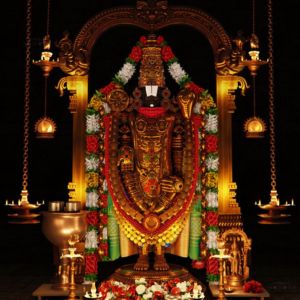
achyutaaya namah' . anantaaya namah' . govindaaya namah' .....
Click here to know more..Three kinds of sins explained
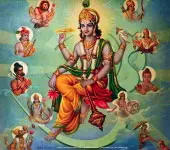 Click here to know more..
Click here to know more..
Vatapi Ganapati Stotram
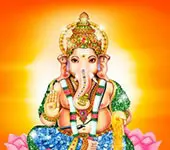
ri'shiraajastutam shaantamajnyaanadhvaantataapanam| herambam sumukham vande vaataapigananaayakam|....
Click here to know more..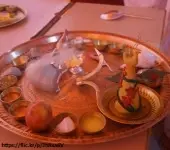
English Topics
Rare Topics
Click on any topic to open
- 237 The Practice of Bhojana Sadhana
- 236 Words of Wisdom - 2
- 235 Defining Goodness - Sanatana Dharma's Perspective
- 234 Vibhishana in Ramayana - A Tale of Morality, Loyalty, and Redemption
- 233 God will not let you break
- 232 A Glimpse into the 64 Arts
- 231 Chembai Vaidyanatha Bhagavatar - A Carnatic Maestro's Musical Odyssey
- 230 Understanding Adhyāsa: A Closer Look at False Attribution
- 229 Is Family's Permission Necessary For Becoming Sanyasi ?
- 228 Faith In Upasana
Please wait while the audio list loads..
30
Ganapathy
Shiva
Hanuman
Devi
Vishnu Sahasranama
Mahabharatam
Practical Wisdom
Yoga Vasishta
Vedas
Rituals
Rare Topics
Devi Mahatmyam
Glory of Venkatesha
Shani Mahatmya
Story of Sri Yantra
Rudram Explained
Atharva Sheersha
Sri Suktam
Kathopanishad
Ramayana
Mystique
Mantra Shastra
Bharat Matha
Bhagavatam
Astrology
Temples
Spiritual books
Purana Stories
Festivals
Sages and Saints
